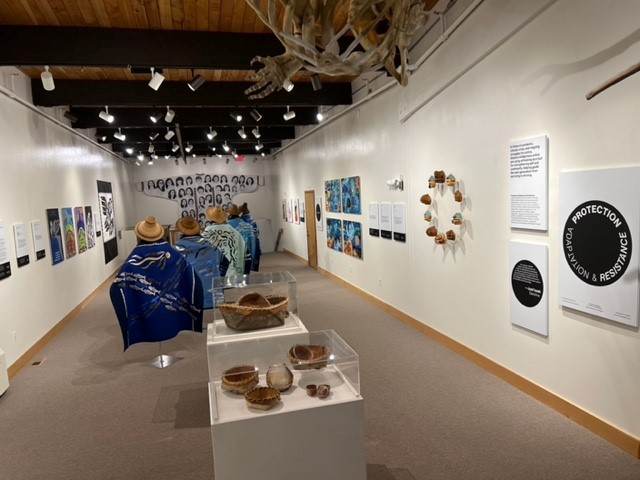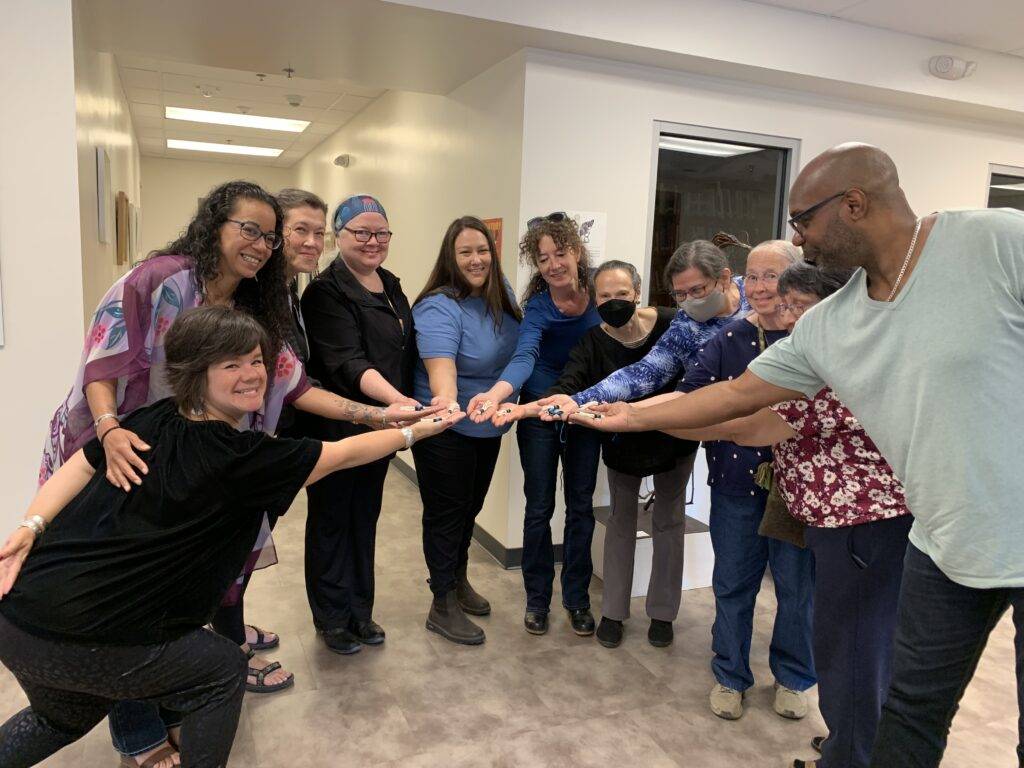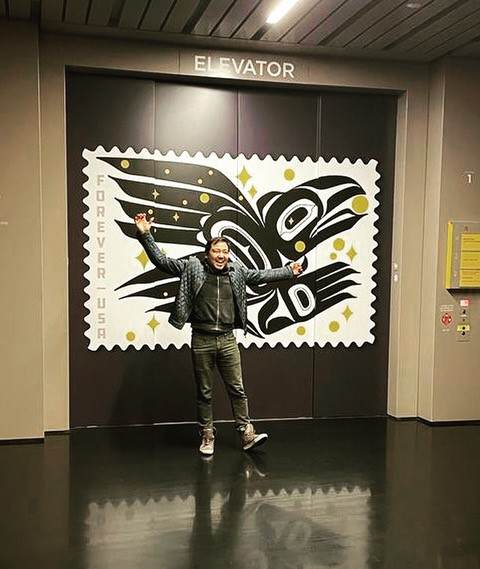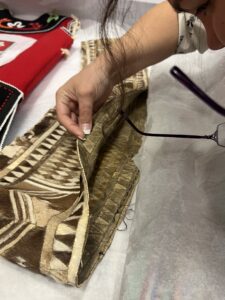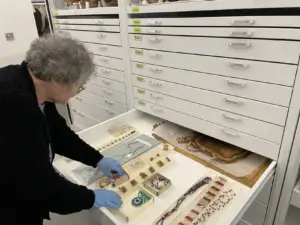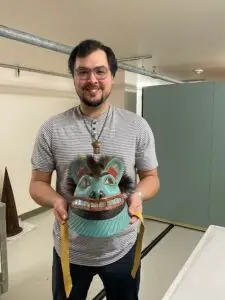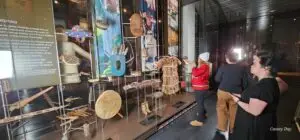Add Your Heading Text Here A Journey to What Matters:...
Read MoreProtection: Adaptation & Resistance
Grantee: Bunnell Street Arts Center
Story by Asia Freeman
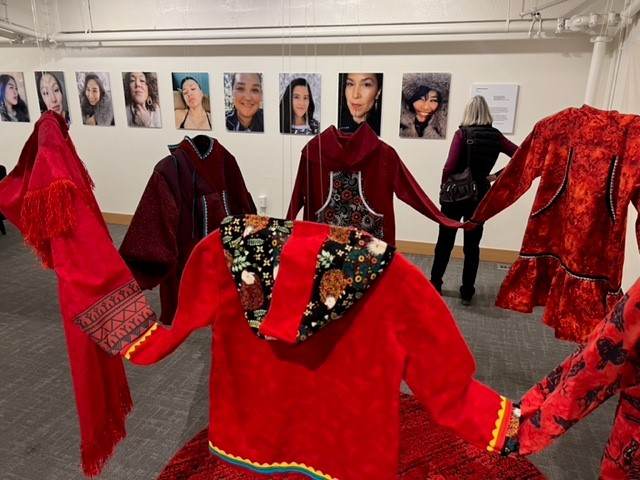
Protection: Adaptation & Resistance is a visual art exhibition produced by Bunnell Street Arts Center, touring from Homer (2022) to Anchorage (2022-3), Portland (2023), Tulsa (2023), Santa Fe (2023-4) and Juneau (2024). The exhibition explores Indigenous ways of knowing. In times of pandemic, climate crisis, and ongoing assaults to human rights, how are Indigenous Alaska artists today strengthening self and community, and guiding the next generation from surviving to thriving? Working within intergenerational learning groups and as collaborators in vibrant community networks, Alaska’s Indigenous artists are invigorating traditional stories in customary arts and proposing resilient futures through design, tattoo, regalia and graphic arts. Artist projects elevate collaboration, allyship, and community as tools of resistance, adaptation, and cultural affirmation. The exhibition explores three themes: Land and Culture Protectors, Activists for Justice and Sovereignty and Resilient Futures.
A non-profit multidisciplinary arts center located at Tuggeht (presently known as Homer, Alaska), Bunnell Street Arts Center strives to strengthen cultural connections across and to Alaska in diasporic times. Between the fall of 2019 and the winter of 2021-2022, Bunnell presented five workshops and four mentorships for Indigenous artist-mentors and Indigenous artist-learners. Some of the artists and several of the participants are Indigenous Alaskans living Outside. These workshops were supported by CARES funds through the Alaska Community Foundation and by The CIRI Foundation. Much of the artwork featured in this exhibition was created in these learning cohorts.
From qaspeq and skin-sewing to stone-carving, weaving and song-making, a new cohort of artist-learners embraces workshops in customary artforms and modern technologies. Indigenous Alaska artist mentors, masters of customary techniques and traditions, activate and inspire a new generation of creators. Kaxhatjaa X’óow Herring Protectors of Sheet’ká Kwáan (Sitka) create five dance robes in community with over a dozen volunteers. To complement these robes, Lingít artist Kunagoo Linda Starbard leads her relatives in the creation of traditional cedarbark hats. Lily Wooshkindein Da.áat Hope engages a cohort of learners to create Chilkat Protector masks and weave ancient ways into strategies of contemporary resistance. Helen McLean mentors Joel Isaak in Dena’ina Birch Bark Basket construction and explores the many ways that birch is a protective shield for Dena’ina culture. Bobby Qalutaksraq Brower creates a healing space for survivors of missing and murdered Indigenous women and girls (MMIWG) where sewers create atikluk or qaspeq in memory of their stolen loved ones. Indigenous Alaska women explore cultural identity and sisterhood in Traditional Tattoo, a collection of selfies. Kunaq Marjorie Tahbone’s Qulliq Seal Oil Lamp carving group celebrates living culture and land stewardship by sparking light and linking animals and ancestors, past and present.
Some artists build community strength through learning cohorts, while others work independently and lead by example. From graphic novels and small-press books to posters and postage stamps, artists express material innovation and contemporary indigenuity. In the first Lingít design featured on a US postage stamp, Raven’s Story, Rico Lanáat’ Worl offers a new take on a traditional story to elevate the cleverness and resourcefulness energizing Lingít culture today. In her Haa Shagéinyaa / Our Protecting Power designs, Crystal Rose Demientieff Worl contemporizes traditional Lingít iconography with luminous color to engage youth and elevate cultural pride around vaccination and masking in Lingít and English. Naal xἁk’w Tommy Joseph calls on ancestors and spirit animals in We’re Still Here, a collection of carved wooden masks. Designed to fit over N95 masks, they align mask-wearing with traditional tools and adaptations of survival. Dimi Macheras and Casey Silver usher Ahtna storytelling traditions into a new era in their vibrant graphic novel Chickaloonies. Amber Webb draws international attention to MMIWG by portraying the faces of nearly 300 Indigenous women missing from Alaska and Canada since 1950 on a giant Memorial Qaspeq. Sarah Ayaqi Whalen Lunn’s collection of drawings, No More Stolen Sisters, Black Lives Matter and Solidarity, celebrate sisterhood and add an Alaska voice to the MMIWG movement. Holly Mititquq Nordlum shares her ongoing work to revitalize the tradition of Inuit tattoo in her ongoing project Tupik Mi. Hanna Agasuug Sholl shares new songs to remind her people that strength and resilience are enduring adaptive cultural traits that span millenia. Melissa Shaginoff’s self-published zine, How To Be A Good Guest, reminds us that for the survival and dignity of all people, it’s vital that we transform expressions of land acknowledgement into actions of stewardship, allyship, and reciprocity.
Art offers all people avenues for healing, fortifying family, and weaving strong, adaptive forms of community. Alaska’s Indigenous artists embrace customary art forms and innovative new platforms for sharing and storytelling to reconnect with ancestral knowledge and strengthen relationships to land and to one another. Amidst challenges ranging from isolation and illness to difficulty accessing resources, today’s Indigenous Alaska artists imbue modern diasporic lifestyles with traditional values, and counter ongoing struggles for social justice with vibrant strategies of resistance and strength.
Read more about TCF’s A Journey to What Matters: Increased Alaska Native Art & Culture
Museums Alaska – Alaska State Museum Visit
A Journey to What Matters: Increased Alaska Native Art &...
Read MoreShare Your Story: ANC Museum Archives
A Journey to What Matters: Increased Alaska Native Art &...
Read MoreKodiak Alutiiq Dancers AANC Anchorage Museum
A Journey to What Matters: Increased Alaska Native Art &...
Read More

